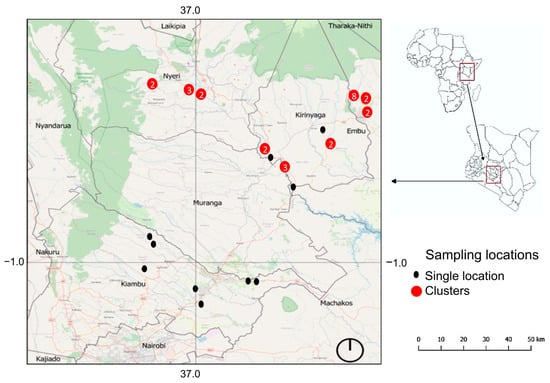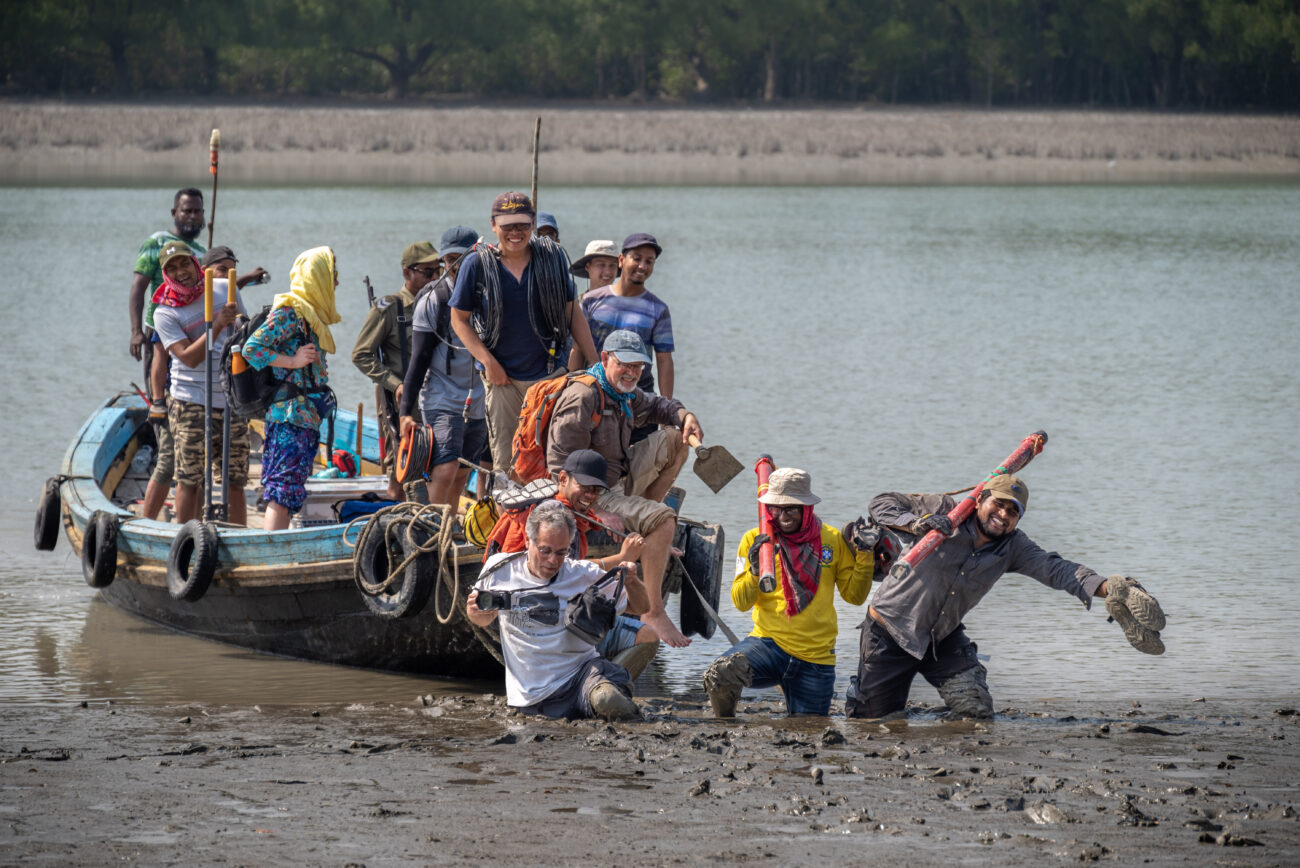The global production of the Nile tilapia Oreochromis niloticus (Linnaeus, 1758) has increased over the last thirty years due to the increasing demand for animal protein [1,2]. In Kenya, this species accounts for 80% of total aquaculture production and has gained popularity in fish farming, including in regions like Central Kenya, where fish consumption is not traditionally common [3,4,5]. Due to the increase in inland aquaculture practices, fish disease outbreaks, increased mortality, and higher parasite burdens are highly likely to occur [6], prompting attention from researchers and fishery stakeholders. In Kenya, research into fish parasitology is steadily growing; approximately 119 species of fish parasites have been reported, with only 83 identified at the species level [7].
Clinostomidae Lühe, 1901, comprises digenetic trematodes with a heteroxenous life cycle that involves multiple hosts. The adult stages are commonly found in fish-eating birds’ buccal cavities and oesophagus as definitive hosts [8,9]. Their life cycle begins when birds release eggs into aquatic environments, which subsequently hatch into free-swimming miracidia. Miracidia infect freshwater snails as the first intermediate hosts and various fish species as the second intermediate hosts, harbouring the metacercarial stages [10]. Although rarely infected, humans and mammals have occasionally been reported as accidental hosts of representatives of Clinostomidae [11,12]. Due to the increased number of reports of members of Clinostomum Leidy, 1856, in aquaculture conditions, it has recently been the subject of many studies. Advances in genetic research have expanded the Clinostomum species catalogue, addressing the challenges posed by relying solely on morphological characteristics, which often show high similarity and minimal variation between species. These genetic tools, therefore, allow for the identification of previously unrecognized species and enable linking larval stages to their corresponding adult forms [9,13,14,15,16,17].
Despite more than 50 species being suggested worldwide as members of Clinostomum, only 15 species are considered valid to date [9,13,18,19]. The diversity of Clinostomum species in the Afrotropical region, on the other hand, is insufficiently explored, with only four species currently recognized: C. cutaneum Paperna, 1964, C. phalacrocoracis Dubois, 1931, C. tilapiae Ukoli, 1966 and C. ukolii Caffara, Locke, Echi, Halajian, Luus-Powell, Benini, Tedesco & Fioravanti, 2020 [15]. Similarly, the limited understanding of the effects of these parasites on Nile tilapia and the conditions facilitating their emergence make it difficult for aquaculture stakeholders to access valuable information for informed decision-making to support aquaculture sustainability [20]. It is interesting to look at the parasitic fauna infecting fish in the central region of Kenya, as most inland aquaculture production occurs there [18]. For this reason, we conducted a survey in the Upper Tana River region with the purpose of assessing the diversity of parasites infecting Nile tilapia reared in fish farms. Regarding clinostomid infections, three species of Clinostomum—C. cutaneum, C. phalacrocoracis and C. tilapiae—have been reported previously in Nile tilapia in Kenya [13,21]. The present study identified the metacercariae using light microscopy, scanning electron microscopy (SEM) and molecular methods. For scanning electron microscopy, surface observations have revealed new ultrastructural features important for the taxonomy and systematics of a wide range of organisms [22]. The findings in this study contribute to resolving taxonomic ambiguities within Clinostomum. In particular, we present additional features in C. cutaneum that were not seen in earlier studies, further enhancing the accuracy of species differentiation within this genus.
Source link
Miriam Isoyi Shigoley www.mdpi.com



